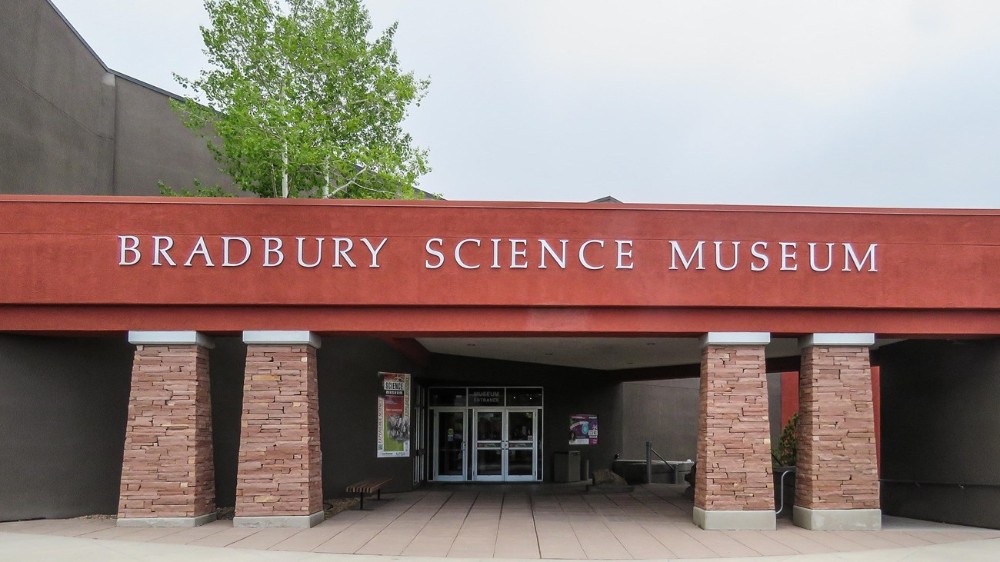On several occasions I visited Los Alamos, New Mexico, my wife’s hometown. It sits atop the Pajarito Plateau in the Jemez Mountain Range. Los Alamos is a federal metropolis, constructed with 1940s-style security and military efficiency. No outstanding architectural wonders mar the striking views: only squarish buildings, unusually wide streets, and Ponderosa pine trees.
A requisite stop in Los Alamos is the Bradbury Science Museum, unlike any place on earth. You are shown the wonders of “weapon development from design to testing.” Duplicates of the first two atomic bombs, playfully named “Little Boy” and “Fat Man,” are on display. Having lived and travelled in Eastern Washington State, I kept my eyes open for Los Alamos’ connection to our Hanford Reservation, another 1940s U.S. Military boomtown.
Following the creation of minute quantities of plutonium in Berkeley, California in 1940-41, Oak Ridge, Tennessee and Hanford were given the assignment of constructing nuclear reactors to furnish material for an atomic device. That product was in hand in 1943.
The early 1940s were an uncertain and dangerous time. The U.S. was at total war with Japan, Germany, and Italy. American naval power was rebuilding following Japan’s surprise attack on Pearl Harbor. The Japanese had also invaded the Philippines. German scientists were working toward an atomic bomb, or similar device, and they already had the rockets to launch such a weapon.
American J. Robert Oppenheimer in earlier youthful years had ridden horses on the mesa upon which Los Alamos would be built. Enrico Fermi and others pressed President Franklin D. Roosevelt to move quickly with an atomic program.
By the end of 1943 Hanford had stealthily risen from the Columbia Plateau. Hanford had been founded in 1906 on the south bank of the Columbia River by the Hanford Irrigation and Power Company, named after Seattleite Judge Cornelius H. Hanford. The judge had headed the power company and owned a nearby ranch. The neighboring community of White Bluffs had once been known for early-crop strawberries and watermelons. Later the area would nurture a deadly crop, plutonium.
At its peak in the 1940s, 51,000 persons were fed and housed at Hanford. There were eight large mess halls, plus barracks, trailer camps, and the omnipresent DuPont Company.
Pu-240, or plutonium, was produced at Hanford from eight reactors. The reactors were cooled by the Columbia River. In 1944 this product was being sent to the Los Alamos laboratory. The whole enterprise was conducted with maximum secrecy.
At 5:29 am, Mountain Time in New Mexico, on July 16, 1945, the first atomic device created an incredible burst of light, flooding the mountains surrounding the Alamogordo Bombing Range in an unearthly brilliance. The plutonium from Hanford’s scenic Columbia River Plateau had merged with Los Alamos’ scientific wizardry among the great dunes of southern New Mexico.
The valley where the first atomic explosion occurred was known to the ancient Spanish as Jornada del Muerto — Journey of Death.
Discover more from Post Alley
Subscribe to get the latest posts sent to your email.

Accurate yet sparse, economically chosen words. Like seeds in the wind.
As important as the nuclear work of Hanford was during World War 2 (and still is), it is known that radioactive pollutants from there impacted those who lived downwind causing unusually large numbers of cancers later in life, particularly thyroid cancer, perhaps attributable to contaminated milk. I live outside of Santa Fe in a direct line of sight to Los Alamos. As we like to say, we can see its glow at night — and during the day.